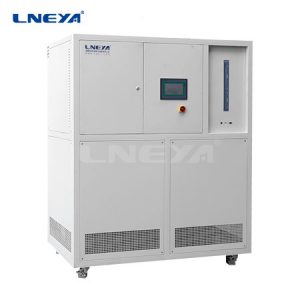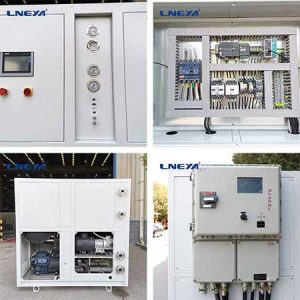Why is the 5 ton water chiller consuming so much electricity?
If the LC -25°C ~ -5°C Low Temperature Chillers continues to run non-stop for a long time, it will be as tired as humans, and the wear and tear of parts will also accelerate.

The editor suggests that customers and friends establish a detailed working time for the chiller when using it. If it is a large space factory, they can choose to install multiple chillers for alternate use, which can avoid the increase in consumables caused by using one chiller alone and reduce energy consumption.
If the cooling effect of the industrial chiller gradually decreases or even does not cool, customers and friends should pay attention. At this point, there is a malfunction problem. After discovering the problem, the staff in charge of the chiller should immediately check the internal condition of the chiller, repair it in a timely manner, or contact the chiller manufacturer for maintenance, rather than letting it go, So the chiller may be abandoned.
As the evaporation temperature decreases, the compression ratio of the compressor increases, and the unit energy consumption for production cooling increases. When the evaporation temperature decreases by 1 ° C, it consumes 3% to 4%. Therefore, minimizing the evaporation temperature difference and increasing the evaporation temperature not only saves energy consumption but also increases the relative humidity of the cold chamber.

As the condensation temperature increases, the compression ratio of the compressor increases, and the energy consumption per unit of refrigeration capacity increases. The condensation temperature is between 25 ° C and 40 ° C, and for every 1 ° C increase, the power consumption increases by approximately 3.2%.
When the heat exchange surface of the condenser and evaporator is covered with a layer of oil layer, the condensation temperature increases and the evaporation temperature decreases, resulting in a decrease in cooling capacity and an increase in power consumption.
When a 0.1mm thick oil layer accumulates on the surface area of the condenser, the refrigeration capacity of the compressor will decrease by 16.6 and the power consumption will increase by 12.4.
When the oil is an inner surface evaporator with a thickness of 0.1 millimeters, in order to maintain the predetermined low temperature requirement, the evaporation temperature decreases by 2.5 ° C and the power consumption increases by 9.7.

When air accumulates in the condenser, the pressure of the condenser will increase. When the partial pressure of non condensing gas reaches 1.96105Pa, the power consumption of the compressor needs to increase by 18.
When the scale of the condenser wall reaches 1.5mm, the condensation temperature rises by 2.8 ° C before the temperature calibration, and the power consumption increases by 9.7.
The surface of the evaporator is covered with frost, which reduces the heat transfer coefficient.
Especially when the outer surface of the finned tube is frosted, it not only increases the heat transfer resistance, but also makes it difficult for the air flow between the fins, reducing the appearance. Heat transfer coefficient and heat dissipation area.
When the indoor temperature is lower than 0 ° C, when the temperature difference between the two sides is 10 ° C, the heat transfer coefficient of the evaporator is about 70 after one month of operation before frosting.
The gas sucked in by the compressor allows for a certain degree of overheating, but if the overheating is too large, the specific volume of the sucked gas increases, the refrigeration capacity decreases, and the relative power consumption increases.
 LNEYA
LNEYA
 简体中文
简体中文


















































































